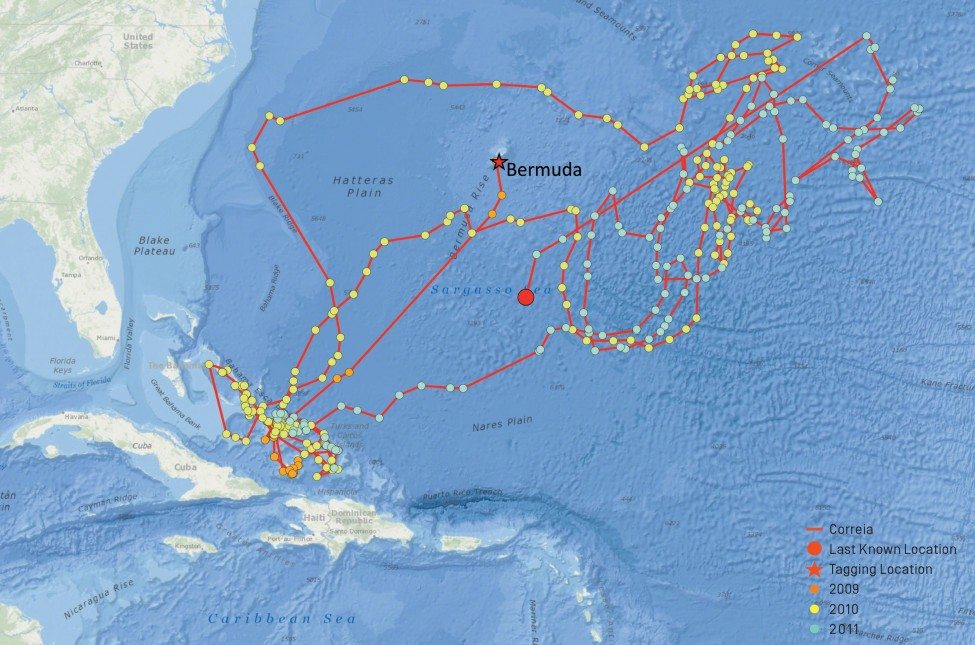Flight of the Tiger
Tiger sharks repeatedly migrate over thousands of kilometres each year in the Atlantic Ocean.
Much like the overwintering birds we are familiar with – swallows, geese, storks, terns and the like – tiger sharks in the Atlantic repeatedly migrate over thousands of kilometres each year to spend summer months in the north and winter in the Caribbean. This has come as a surprise to shark scientists who largely thought of tiger sharks as coastal even though, until now, we knew very little about their long-term movements.
The recent study that shed light on this migration was the first to satellite-track tiger sharks for long periods. We now know the sharks make round trips of 7,500 kilometres a year – further than the distance between New York and Rome – to get to and from two very different environments: the warm, coral reef-filled waters of the Caribbean in summer and the open, emptier waters in the middle of the North Atlantic in winter. The distances are vast, the environments are disparate and the behaviour is unusual among fish.
SOSF Shark Research Center
The SOSF Shark Research Centre (SOSF-SRC) is located in Florida and was established at Nova Southeastern University in 2009 by directive of the founder of the Save Our Seas Foundation.
The centre focuses mainly on scientific research aimed at increasing knowledge to aid the conservation, management and understanding of sharks and rays worldwide.
A hallmark of the SOSF-SRC is that it specialises in taking integrative, multi-disciplinary approaches to research and conservation, which include combining high-tech genetics, genomics and field work to illuminate holistically aspects of shark and ray science that would be difficult to decipher using single-discipline approaches alone.
The SOSF-SRC also serves as an academic unit within Nova Southeastern University and as such its function includes the training of students from around the world in marine research and conservation. Although advanced scientific research is the main focus of the SOSF-SRC, our staff also undertake educational and outreach activities involving primary (US middle) and secondary (US high) school students.

